Modernizing Legacy Systems: The Role of Application Assessment in Digital Transformation
In today’s fast-paced digital ecosystem, businesses face a pivotal challenge: transforming outdated legacy applications into agile, future-ready systems that drive innovation and competitiveness. Application assessment isn’t just a technical process—it’s a strategic enabler for sustained growth. By identifying technological roadblocks and crafting tailored solutions, organizations can turn constraints into opportunities, ensuring they stay ahead in the race toward digital excellence.
The Invisible Burden of Legacy Systems
Legacy systems, while foundational in the past, often evolve into barriers to progress. They hinder innovation, slow performance, and expose organizations to vulnerabilities.
But how do you determine when modernization becomes essential?
- Decreasing Efficiency: Are your processes taking longer than expected?
- System Incompatibility: Is your software struggling to integrate with newer tools?
- Scalability Issues: Can your system handle the demands of tomorrow?
These signs indicate it’s time for a change—and application assessment is the first step.
Real-World Success Stories
- Bajaj Allianz: Burdened by delays due to outdated systems, they conducted an application assessment that led to faster processing and improved customer satisfaction.
- IndusInd Bank: Facing long development cycles, they reduced deployment times by 65% through strategic assessment, regaining their competitive edge in the market.
What Is Application Assessment?
Application assessment is a comprehensive diagnostic process for your digital infrastructure, designed to uncover key insights and drive modernization. It goes beyond identifying flaws and offers valuable perspectives such as:
- Technical Debt: Pinpoint outdated code or infrastructure that causes inefficiencies and hinders performance.
- System Dependencies: Understand how interconnected systems affect overall functionality and performance.
- Cloud Readiness: Assess your infrastructure’s compatibility for seamless integration with cloud environments.
- Modernization Strategies: Identify resource-efficient, cost-effective paths to transforming your legacy systems into future-ready solutions.
This thorough evaluation is the first step towards optimizing your digital framework and preparing for a more agile, scalable future.
Why It Matters
The benefits of application assessment go beyond mere modernization:
- Risk Mitigation: Identify and address vulnerabilities before they escalate.
- Cost Optimization: Prioritize investments that deliver maximum ROI.
- Goal Alignment: Ensure your IT roadmap supports business objectives.
- Performance Boost: Improve efficiency, scalability, and agility.
The Atlas AMP Advantage
Modern tools like Atlas AMP revolutionize application assessment by offering:
- Automated Vulnerability Scans: Detect risks efficiently.
- Dependency Mapping: Understand the ripple effects of changes.
- Tailored Roadmaps: Build actionable modernization strategies.
- Compliance Insights: Stay ahead of regulatory and security requirements.
Your Modernization Blueprint
- Analyze: Upload your application code for detailed diagnostics.
- Identify: Use data-rich reports to uncover key improvement areas.
- Plan: Create a modernization roadmap aligned with business goals.
- Execute: Implement updates based on precise insights.
The Payoff of a Holistic Approach
- Proactive Risk Management: Detect hidden vulnerabilities before they escalate into systemic challenges.
- Budget Optimization: Identify the most impactful modernization investments.
- Alignment with Goals: Synchronize your technology roadmap with business objectives.
- Performance Gains: Enhance agility, efficiency, and scalability.
Your Modernization Blueprint
Step 1: Analyze
Submit your application code for a detailed evaluation to uncover areas for improvement.
Step 2: Identify
Use comprehensive reports to pinpoint critical improvement opportunities.
Step 3: Plan
Develop a strategic modernization roadmap tailored to your specific business goals.
Step 4: Execute
Implement targeted updates with actionable, data-backed insights to drive transformation.
The Cost of Inaction
Every delay in addressing legacy systems comes at a cost: lost productivity, reduced customer satisfaction, and missed opportunities. Legacy frameworks don’t just hold you back—they create a widening gap between your business and its potential.
Conclusion: Charting a Path Toward Digital Excellence
Application assessment is more than a gateway to modernization—it’s a blueprint for reinvention. By evaluating legacy systems and creating tailored solutions, businesses can unlock opportunities within their existing infrastructure.
It’s not just about catching up with competitors but surpassing them with smarter, more agile technology. This process empowers organizations to future-proof operations, enhance customer satisfaction, and foster innovation aligned with industry standards.
Delaying modernization means risking stagnation. Begin your transformation journey today and turn challenges into opportunities for growth and success.
